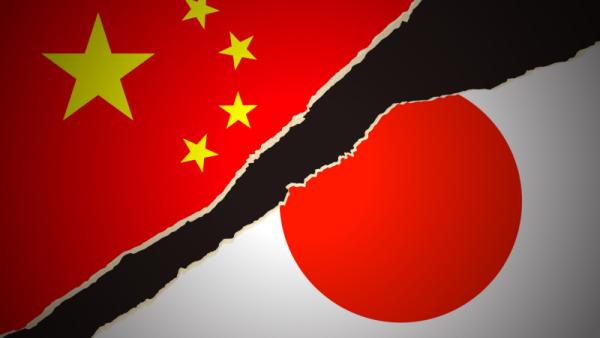RRice / Shutterstock

Wanning Sun, Professor of Media and Communication Studies, University of Technology Sydney |
This article appeared in Crikey on February 16 2023.
Japan’s Shingo Yamagami warned Australia to be ‘vigilant’ over China’s military aggressions in the region. Not pleased, China’s Xiao Qian criticised his Japanese counterpart for failing to do his job ‘properly’. He suggested Tokyo may once again launch a military attack on Australia, saying: ‘During World War II, Japan invaded Australia, bombed Darwin, killed Australians, and treated Australian POWs in a way that was unacceptable.’
While Xiao highlights history, Yamagami is all about the future. In a remark reminiscent of John Cleese in Fawlty Towers, he told the ABC: ‘We all know how many years have passed since the end of World War II. We all know the postwar trajectory of peace-loving, rules-abiding Japan.’
It’s not hard to understand, but the Australian media mostly favoured Yamagami’s position. He gave an exclusive interview to The Australian. The Sydney Morning Herald’s Matthew Knott, having described Xiao’s comment as an ‘extraordinary attack on Japan’, was ‘eager’ to interview Yamagami over lunch. News.com.au described Xiao’s remark as ‘bizarre’ and ‘inflammatory’. The ABC’s breakfast host Hamish Macdonald described Xiao’s response as ‘unedifying’.
The diplomatic row did not go unnoticed in China. Not surprisingly, its international broadcaster CGTN defended Xiao’s remark via an op-ed by Daryl Guppy, a member of the Australia China Business Council. Guppy argued that although the ‘atrocity-denial industry’ in Japan may not concern the US or Australia, it continues to be of great concern for Asia, especially China. He mentioned the Nanjing Massacre, which led to the death of 300,000 people, and highlighted the notorious Unit 731, which conducted biological and chemical warfare tests leading to the death of some 3000 Chinese civilians.
Many commentators in Asia and beyond have pitted Japan against Germany over their dramatically different approaches to the past. In China and a few other Asian countries, despite a few past Japanese prime ministers expressing remorse over its war atrocities in Asia, there is a general sentiment that it still has not officially, formally and properly apologised. Nor is there evidence of genuine national soul searching. As US-based commentator Elias Groll wrote for Foreign Policy a few years ago:
These are steps that for a country without a recent history of regional imperialism — and, some argue, genocide — wouldn’t be particularly controversial. But in East Asia, where the memory of Japan’s behaviour during World War II still rings fresh, it is anything but.
Australians feel rightly displeased by Xiao’s lecture on Australian history. How dare a diplomat representing another country tell us what to think and feel — especially a country that is increasingly imagined as Australia’s biggest security threat.
In contrast, Australian journalists seem to tolerate Yamagami’s ‘unsolicited advice‘ over its relationship with another nation. Furthermore, as John Menadue, Australia’s ambassador to Japan for the Fraser government, wrote, Yamagami is popular among hawkish circles in Canberra. He also seems to have earned brownie points with our media not in spite of but precisely because of this reputation. For instance, Knott enthuses that the outspoken ambassador is ‘the most forthright and energetic ambassador working in Canberra’.
The only commentators who saw Xiao’s point of view are from outside the mainstream media. They acknowledge the national sentiment his remark embodies, and the depth of collective pathos that motivated his bitter comment. Gregory Clark, a former senior diplomat in Japan and a correspondent for The Australian in Tokyo a few decades ago, was not aiming for diplomacy when he argued that it was the Japanese ambassador who had breached ‘diplomatic protocol’:
When a diplomat from Japan, the nation that in recent memory also attacked Australia, tells us we are now in danger from China, the nation which helped save us from that Japanese attack, we are entitled to wonder who is the pot and who is the kettle.
And it wasn’t just older Australian diplomats and elderly war veterans in Australia who still wanted to mention the war. For Australia’s Chinese communities, the emotional effect of reading these uneven-handed media tales of the two ambassadors was at best polarising, at worst hurtful and alienating.
Remembering history tends to be more important to the injured party. This is illustrated by our Malaysian-born Foreign Affairs Minister Penny Wong who, speaking of her family’s experience of British colonialism, recently told a UK audience that, ‘uncomfortable’ as it may be, the UK must ‘confront its colonial past’. She justified this less-than-diplomatic remark by arguing that ‘understanding the past enables us to better share the present and the future’.
Wise words indeed.
Author
Professor Wanning Sun is a UTS:ACRI Advisory Board member, UTS:ACRI Research Associate, and Professor of Media and Communication in the Faculty of Arts and Social Sciences at UTS.


